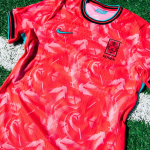
How altinha became the game of the summer 2024
A cultural bridge between Brazil and the rest of the world
September 13th, 2024
The vast Brazilian beaches of the neighborhoods of Ipanema and Copacabana are the home of altinha, an activity that achieved great success in Italy this past summer, creating a cultural bridge between two countries united by an immense passion for football. Everyone has played altinha at least once. Besides not being able to use their hands to touch the ball, there is only one rule: pass the ball through aerial play, avoiding letting it touch the ground. Only the most experienced players add a couple of fun rules, such as playing only with first touches and including smashes (naturally with the top of the foot), two variables that undoubtedly increase the difficulty level of the game. Needless to say, altinha is played barefoot on the sand by default (with a few small exceptions), whose softness cushions even the most daring moves, such as bicycle kicks – in this game, it’s not uncommon for players to throw themselves to hit the ball with their thigh. Until this year, few referred to this activity by its original name, but the impact of thousands of videos published on TikTok by Brazilian teenagers has set the record straight.
@bigclaytz Evenings on Copacabana Beach, Rio de Janeiro #brazil #riodejaneiro #copacabana #football #beachfootball #fyp #viral #fypage original sound - Neymarae
The origin of altinha and its entrance into pop culture
Altinha originated in the 1960s right in Ipanema, one of Rio de Janeiro’s most famous neighborhoods. As the name suggests, it comes from "alto," which in Portuguese has the same meaning as in Italian, meaning "high." Even though the only requirement to play is a football, altinha has little to do with traditional football rules and values. Participants play for each other, not against an opponent. No winners, no losers. Altinha is just a challenge against gravity, and that’s it. While we mentioned the wave of TikTok videos that have further fascinated those who already played this game by the sea with friends and introduced a new activity to those who didn’t know it, the credit for altinha’s entrance into pop culture also goes to Jean-Marc Joseph. A filmmaker and director, Jean-Marc Joseph made a short documentary on altinha (Altinha - a documentary about keeping it up) after spending three months in South America and realizing the cultural significance it holds.
@jonathancoquelle C’est ça la vie #riodejaneiro #football #futebol #altinha #brazil #ipanema #pourtoi Home - Edith Whiskers
What ball is used for altinha
One of the most complex topics in altinha concerns the ball. The official ball – and thus recommended for proper gameplay – is made by Mikasa and has FIFA licensing. The most common color is yellow and black, although many people enjoy using the black and white one. It’s very difficult to find a ball that can replace the official one, which boasts enviable grip, the right weight and size, and aerodynamics not found in more common balls. Additionally, if an official ball isn’t available, it’s not necessarily better to use a football instead of a beach volleyball, which can be a great substitute. However, there are no official altinha competitions, as it’s still a friendly game with no winners or losers. Historically, it is said that altinha is the ancestor of footvolley, a sport gaining great recognition worldwide, partly thanks to the European Footvolley League (EFVL), an organization promoting footvolley as an internationally recognized sport.
In short, the future of beach sports seems to be in good hands, especially thanks to the success of altinha. But what does the future hold? Altinha could one day lose its "friendly" spirit and perhaps evolve into a team competition.












